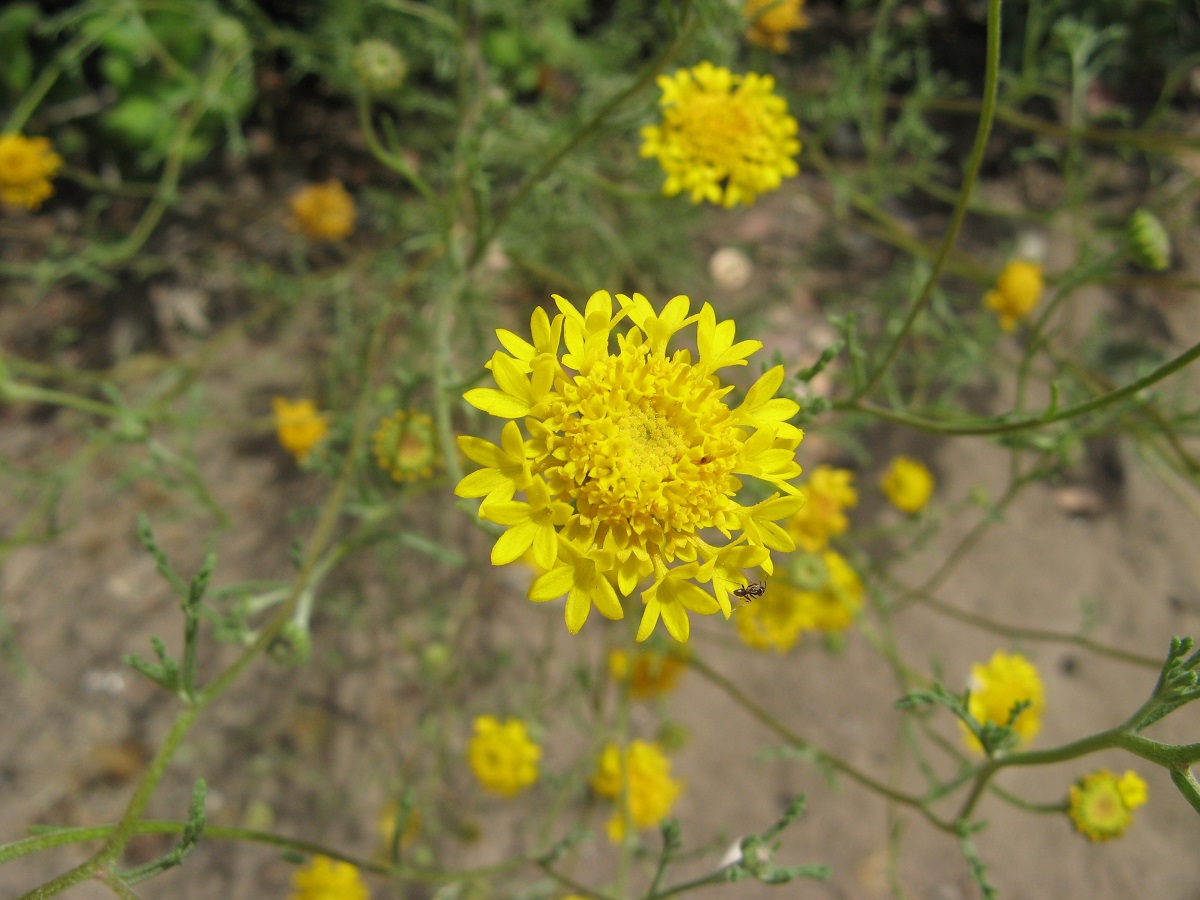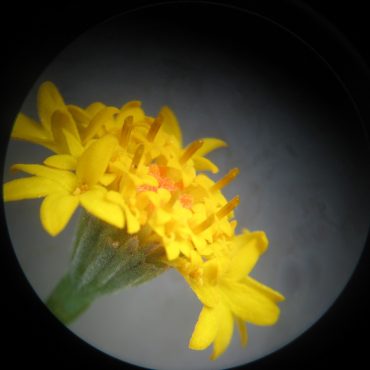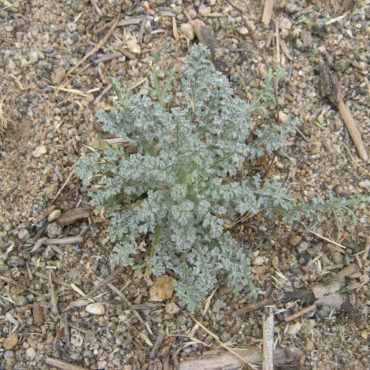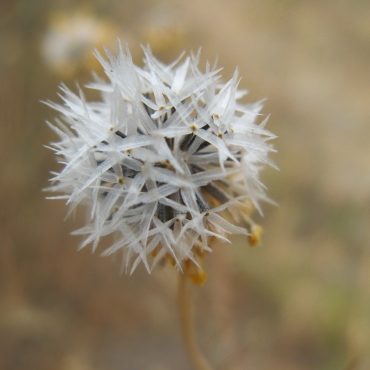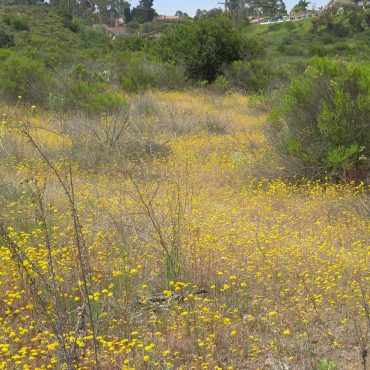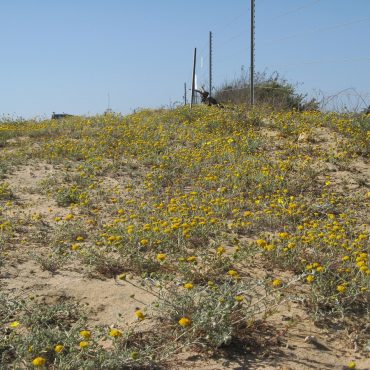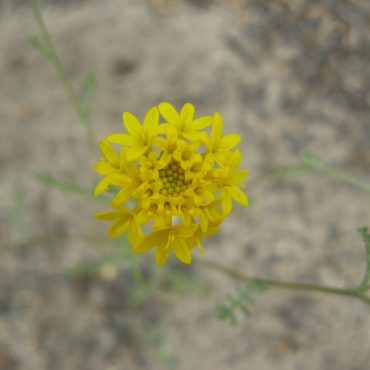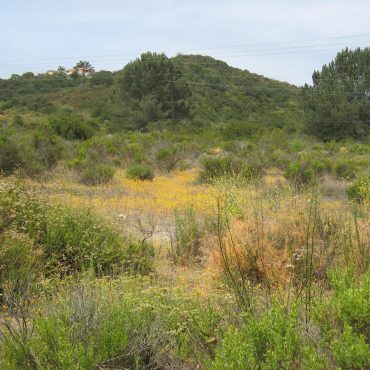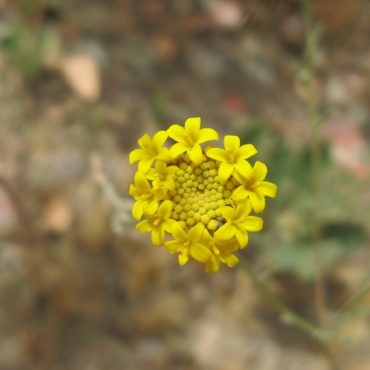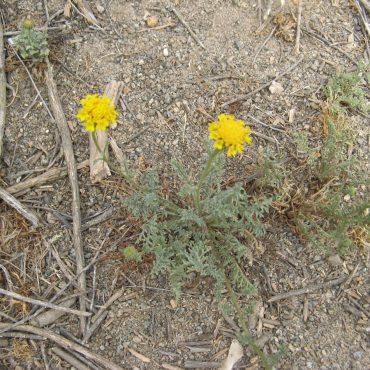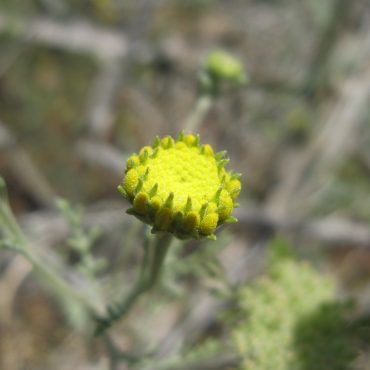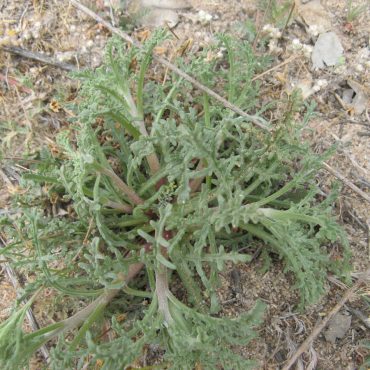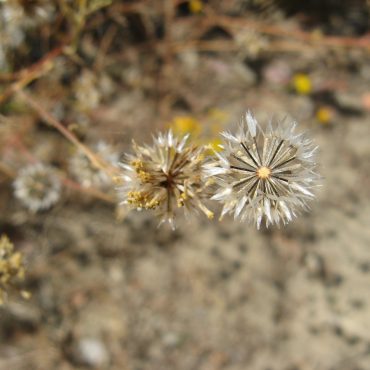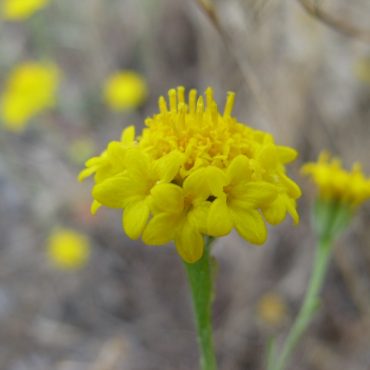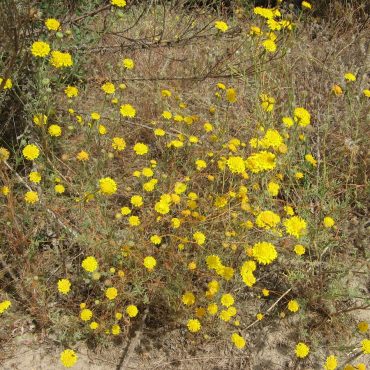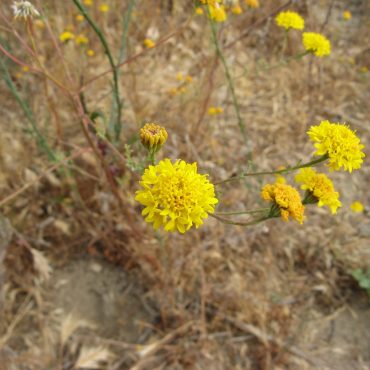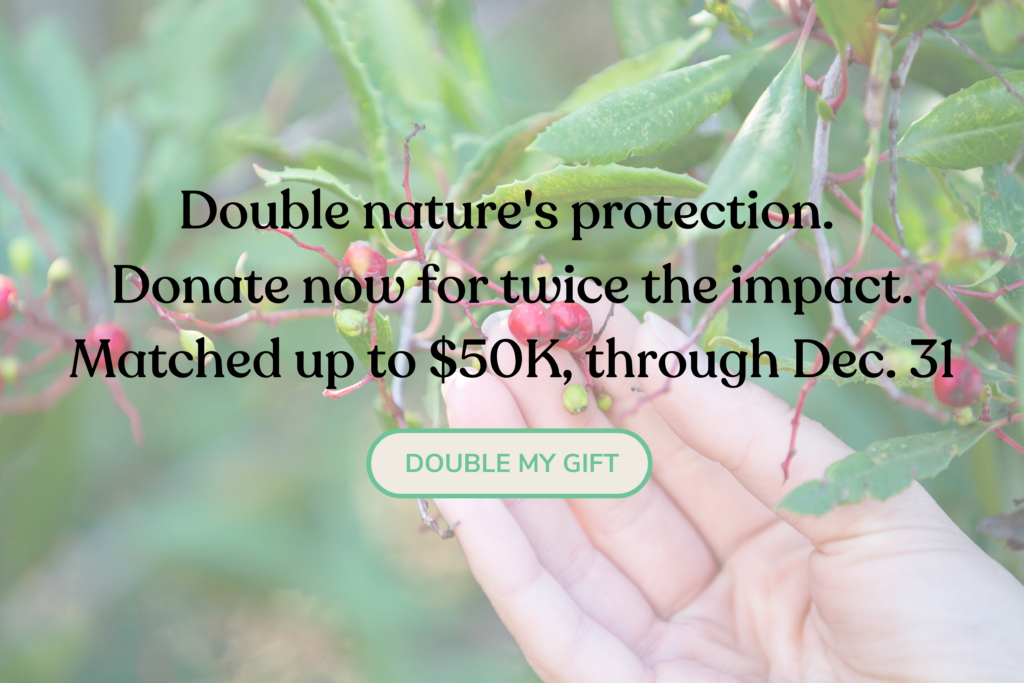Description
2,4,23,59
The yellow pincushion is an herbaceous, multi-branched, annual plant that grows 1 – 2 feet high (30 – 60 cm). All parts of the plant may be covered with cobwebby hairs, especially when young, and all parts are glandular and very sticky. One or more slim, green or reddish branching stems arise from a basal rosette of leaves, which is present in the early spring but usually withers soon after flowers start. Large basal leaves may reach 4.5 inches (11 cm) in length. Small, sparse leaves persist along the stems. Leaves are thickened and finely divided once or twice or occasionally undivided; final divisions are often no wider than thick. Leaf surfaces fold up along the central axes, giving them the three-dimensional look of salad greens.
The yellow flowers are composite flower heads consisting only of disk florets of two types that form a hemispherical cluster. The outer florets are larger, even in the buds stage, and asymmetrical, with the larger petals flaring to the outside. These florets are female and have a single pistil with two elongate stigmas curling outward, Inner disk florets are smaller, symmetrical and bisexual. The five stamens are united in a column around the pistil, the “pins” in the “pincushion”. Disk florets open sequentially from the outside. The major bloom time is April through July 1
The tiny black seeds are slim awl-shapes, less than 1/4 inch long (5 mm). Like many composites (dandelions for example) they are dispersed by means of a pappus at one end that serves as a parachute to carry them in the wind. Unlike many composite flowers, such as dandelions, the parachute does not consist of a tuft of hairs but of four broad, flat scales – little helicopter blades.

